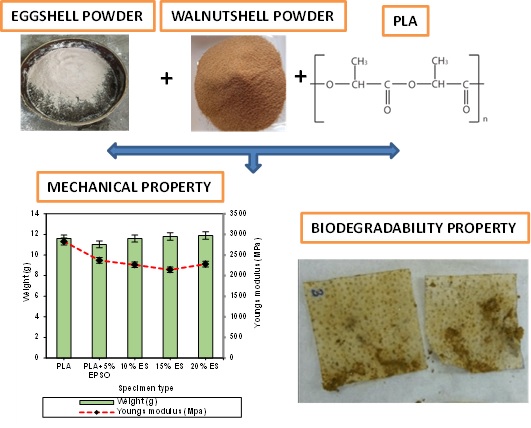
Composites gain utility when filler materials are incorporated. The qualities of the material are changed when filler components are added. In recent years, the use of bio-based components in polymers and polymer composites has significantly increased. Agricultural wastes are employed in this case as filler component to create bioplastic composites since they are inexpensive, plentiful, and easily accessible. By varying the weight ratios of Eggshell (ES) powder and Walnut shell (WS) powder added to the plasticized PLA, bioplastic composite samples are created. Epoxidized soybean oil (5wt%) is used to create the plastic. The obtained bioplastic particles are then subjected to additional processing by being shaped into dog-bone-shaped samples and tested mechanically and thermally. Mechanical testing, including Tensile, Charpy Impact, and Flexural tests, revealed that the PLA possessed inferior properties to those of virgin PLA. The qualities of plasticized PLA-ES composite, however, performed better than those of plasticized PLA-WS composite.
Total file downloads: 27